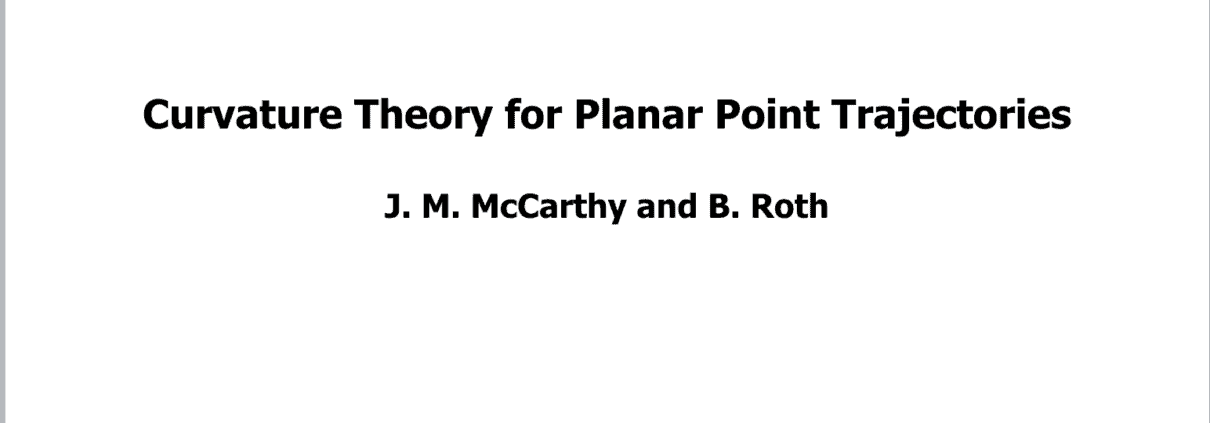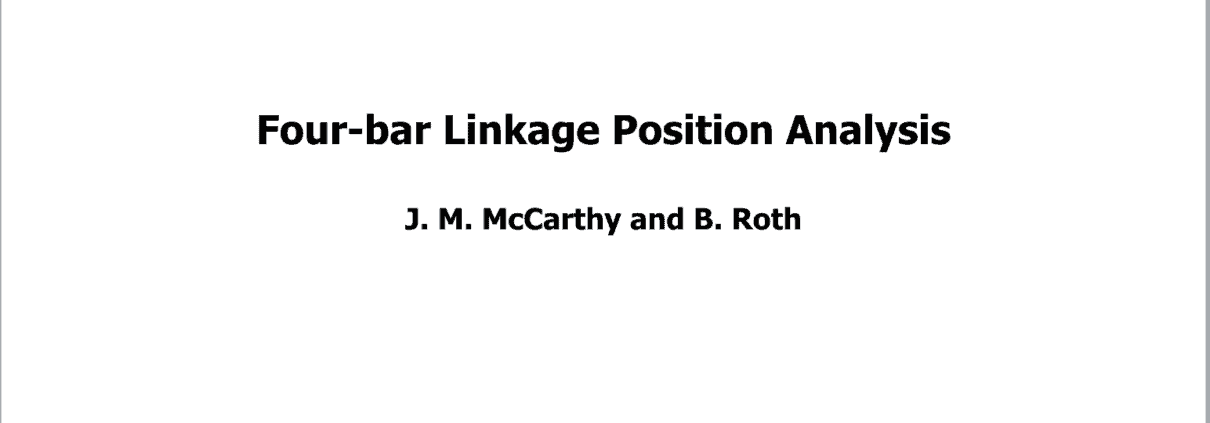Quaternions in Kinematics: BYU Lecture
Students at BYU formed a study group advised by Prof. Denise Halverson to explore Kinematic Synthesis. They invited me to join them to discuss Quaterions and how they are used in Kinematics.
I have not talked about this material in some time, so it was interesting pulling together the theory from many past talks, but I soon became afraid that I was assembling a short course, not a lecture. So I took a different approach.
Here is a video of the lecture. The notes that I prepared are posted below.
My Quaternions in Kinematics presentation is posted here.

 MDA Press
MDA Press









